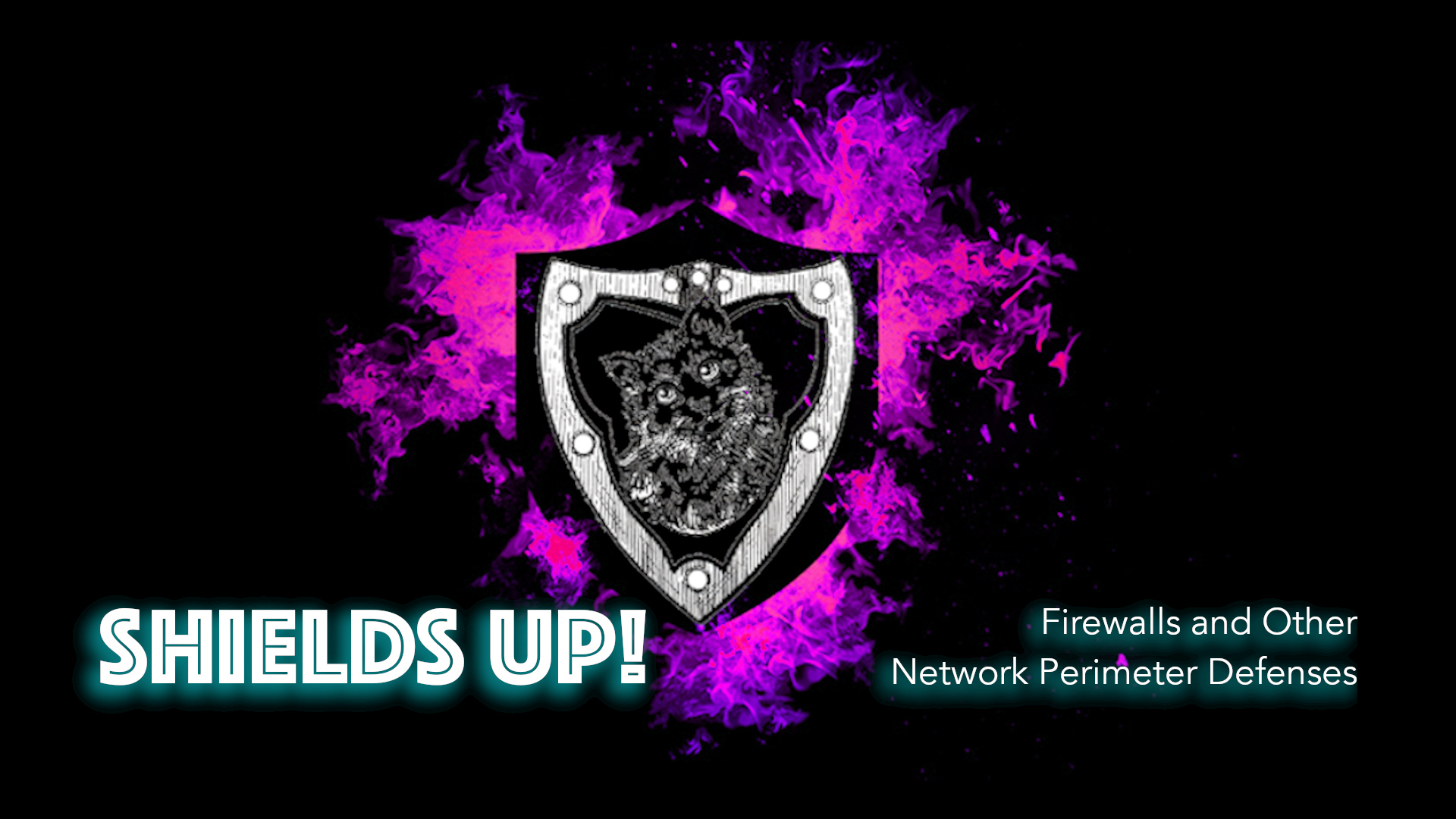Shields Up: Firewalls and Other Network Perimeter Defenses

Tickets are no longer available for this event.
View upcoming events or subscribe to our events calendar to make sure you catch the next one.
Event description
Master the fundamentals of personal and enterprise-grade network firewalls in this hands-on workshop about network perimeter security. By learning to use the macOS, Windows, BSD, and Linux firewalls (including command-line utilities like iptables, nft, and pfctl), you can protect your devices even on untrustworthy or hostile networks, like public Wi-Fi. Intended for all audiences, you’ll gain experience with both beginner-friendly and advanced tools including dedicated firewall distributions (like pfSense and IPFire) as you get an introduction to a wide range of NetSec scenarios. We’ll also cover the important security properties of NAT routers, how deep packet inspection (DPI) works, and get you started with industry-standard Network Intrusion Detection/Prevention Systems (NIDS/NIPS) like Snort and Suricata.
Workshop Description
In today’s ubiquitous computing environment, the most frequently used entrance (and exit!) in to (or out of) any system is its network connection. That’s why network firewalls have been a central component of every network security architecture since their introduction in the 1980’s. A firewall’s primary responsibility is to stop the spread of malware, help prevent cyberattacks and unauthorized data exfiltration, or isolate other problems in one network or network segment from affecting others. Thus, firewalls serve to compartmentalize one area of a computer network from another. And while they are most commonly thought of as being at network boundaries like your home or office router, just about every computer has a firewall these days, including your personal laptop.
Modern firewalls can also do a lot more than their first or second generation ancestors that simply blocked certain ports or kept track of ongoing conversations between two endpoints. By building on so-called Deep Packet Inspection (DPI) technology, firewalls can analyze the traffic passing through them in real time, making decisions about what to allow or block based on myriad factors. On more heavily policed or otherwise protected networks, firewalls have evolved into very powerful Network Intrusion Detection or Prevention Systems (NIDS/NIPS).
But don’t make the mistake of thinking this power is reserved for rich corporations! The firewall built into the Linux kernel (called Netfilter and controlled with the
iptablesornftcommands) is the backbone of many commercial enterprise firewall distributions, and it’s available free of charge. Plus, its ability to intercept and modify traffic in-flight is the basis of many proxy technologies such as Docker’s networking and Kubernetes’s kube-proxy, among others.So, are your network shields up? Find out at this workshop where we’ll show you how to use the firewall built-in to your Windows, macOS, or GNU/Linux laptop. We’ll also show you how to set up firewalled subnets using NAT routers, a bulletproof way to keep unsecured Internet of Things (IoT) or smart-home devices from infecting your more critical personal devices, or to make a super-secure guest Wi-Fi network available for visitors. You’ll leave understanding the utility of so-called Layer 7 firewalls such as Web Application Firewalls (WAFs), and knowing how to test the security of your own firewall configurations.
As this is a remote/online-only event, there is no physical class space, but attendance is still limited to 15 students, so purchase your ticket now to reserve your spot.
To participate in our webinars, you will need access to a modern Web browser such as an up-to-date copy of Mozilla Firefox or Google Chrome. You will also need a reliable Internet connection. We recommend disabling Wi-Fi and plugging your computer in to a hard-wired Ethernet network cable for the duration of the webinar, if possible.
If you would like to share your video screen or appear on camera, you will need to have and activate your own camera, such as the one built-in to many modern laptops. Similarly, to speak with the rest of the webinar participants, you will need a microphone. If you do choose to activate your microphone, we ask that you please plug in headphones/ear buds or use a headset in order to help reduce audio feedback loops that can degrade the webinar experience for other participants.
Please refer to our workshops and webinars FAQ for additional tips and advice before you join the video conference.
As with all Tech Learning Collective events, racism, queerphobia, transphobia, sexism, “brogrammer,” “manarchist,” or any kind of similarly awful behavior will result in immediate removal from class without a refund. Please refer to our lightweight social rules for details on our strictly enforced no-tolerance policy against bigotry of any kind.
About Tech Learning Collective
Tech Learning Collective is an apprenticeship-based technology school that trains politically self-motivated individuals in the arts of hypermedia, Information Technology, and radical political practice. We offer unparalleled free, by-donation, and low-cost computer classes on topics ranging from fundamental computer literacy to the same offensive computer hacking techniques used by national intelligence agencies and military powers (cyber armies). For more information and to enroll, visit TechLearningCollective.com.
Performances by
- New York NY United States
Presented by
- New York NY United States